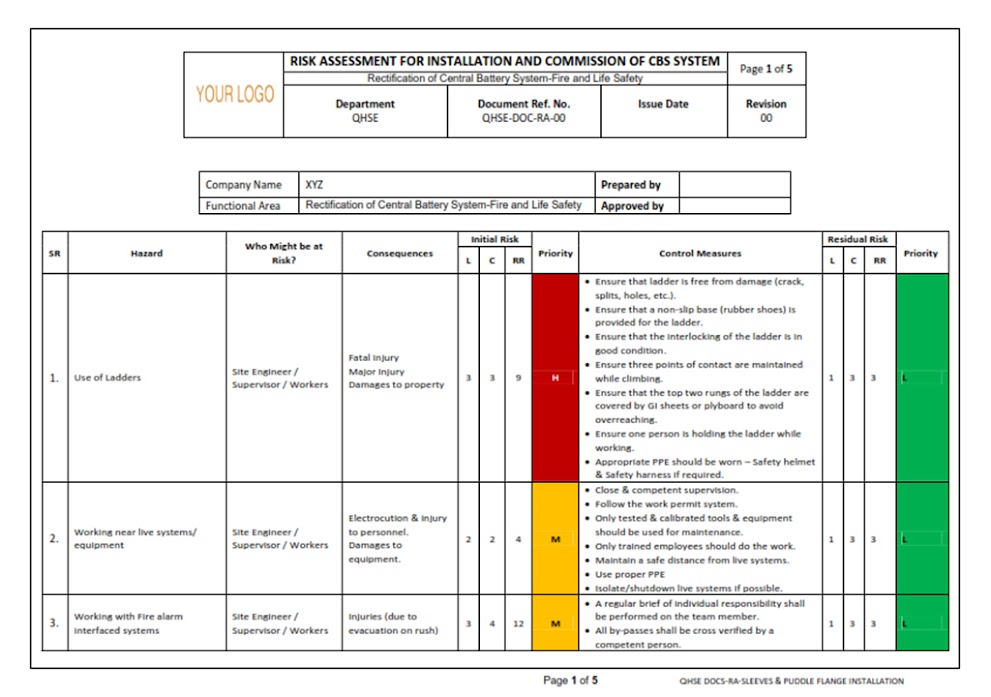BIOHAZARDS JOB SAFETY ANALYSIS TOOLBOX TALKS POWERPOINT
These under discussion text lines are taken from the original editable "Biohazards Job Safety Analysis Toolbox Talks " by HSE Documents. to download more health and safety and quality documents, keep on visiting my blogsite at hsedocuements frequently.
TOOLBOX TALK JOB SAFETY ANALYSIS
Introduction
Almost every work activity we do is associated with various risks or hazards. To minimize these risks most individual workers make a vigilant struggle to be aware of such critical situations around them that may cause physical or environmental harm.
Job safety analysis (JSA)
Job safety analysis (JSA) targets the following:
A- Relationship between a worker
B- The task to be performed
C- The work environment
D- The equipment and tools related to the task
The Job safety analysis (JSA) procedure looks so general and simple but the outcomes and benefits of practicing it accurately are ascending, such as lowering the number of physical injuries or unexpected events that may happen. To correctly perform a Job safety analysis (JSA), the following three steps must be accomplished.
- Identify the steps needed to complete the task
- Pinpoint possible hazards that may occur in each step
- Eliminate or reduce the severity of the hazards that may occur
Actual Near Miss
An MEP/civil technician was carrying out a grinding activity on deck by wearing most of the required Personal Protective Equipment (PPE) except for the essential and recommended eye protection (face shield/safety goggles). If the MEP/civil technician had carried out a Job safety analysis (JSA) before the grinding activity, he would have been aware that eye protection was recommended and suggested by his HSE engineer as a control against eye hazards. Once a Job safety analysis is accomplished, individuals involved in the task must use all controls recommended preventing injury, including all Personal Protective Equipment (PPE) that applies for that task.
JSA hazard types
Job safety analyses cognizance of the connection among an employee, the undertaking to be carried out, the work environment, and the gadget and tools related to the venture. While assessing, evaluating and identifying various types of hazards, the following numbers may assist to highlight the issues.
- Is there a danger of striking or being struck by an object?
- Is there a danger of being caught in, by, or between objects?
- Is there a danger of slipping, tripping, or falling?
- Can cause strain or muscle damage by pushing, pulling, lifting, bending or twisting?
- Is there a danger of harm to the eyes, hands, feet or other parts of a worker’s body?
Various hazards may be possible and happens and can be discussed and enlist as below:
A. Chemical
B. Physical
C. Biological
D. Ergonomic
The below points provide hazards example associated with each category:
Chemical Hazards
- Inhalation
- Skin contact
- Absorption
- Injection
- Ingestion
Ergonomic Hazards
- Repetition
- Forceful exertions
- Awkward postures
- Contact stress
- Vibration
- Work area design
- Tool or equipment design
Physical Hazards
- Electrical Fire/Explosion
- Noise Slips/falls
- Struck by/against
- Radiation
- Thermal stress
- Pinch points
Biological Hazards
- Bloodborne pathogens
- Brucellosis
- Building-related illness
- Legionnaires’ disease
- Mould
- Plant & insect poisons
- Tuberculosis
- Water (grey & black) & wastewater





















